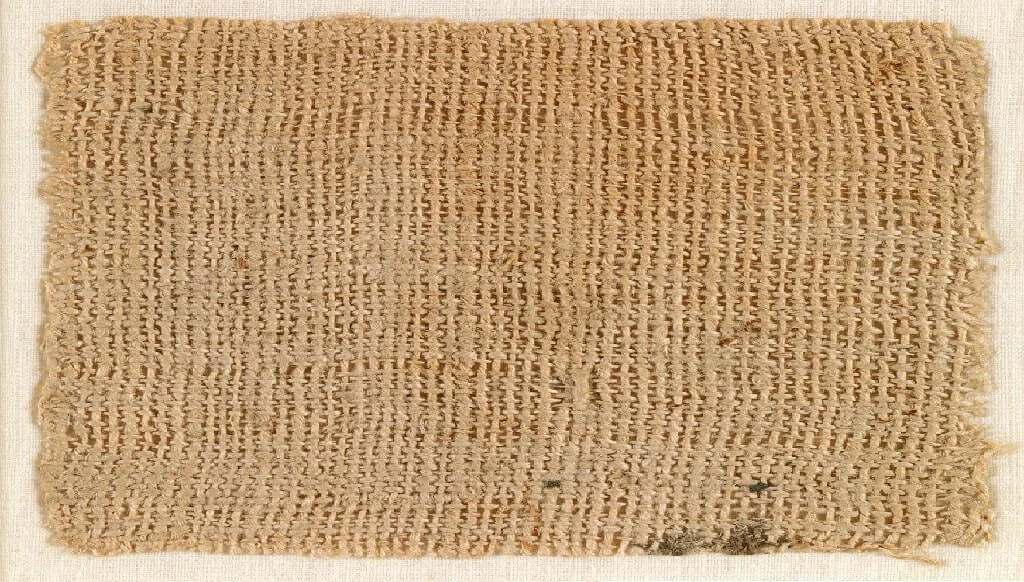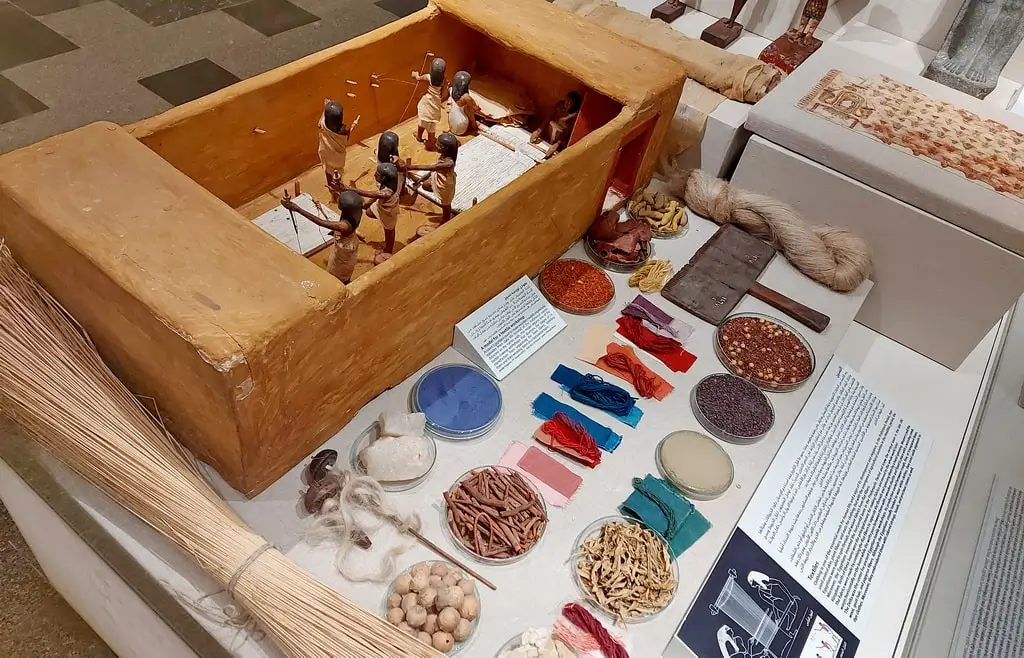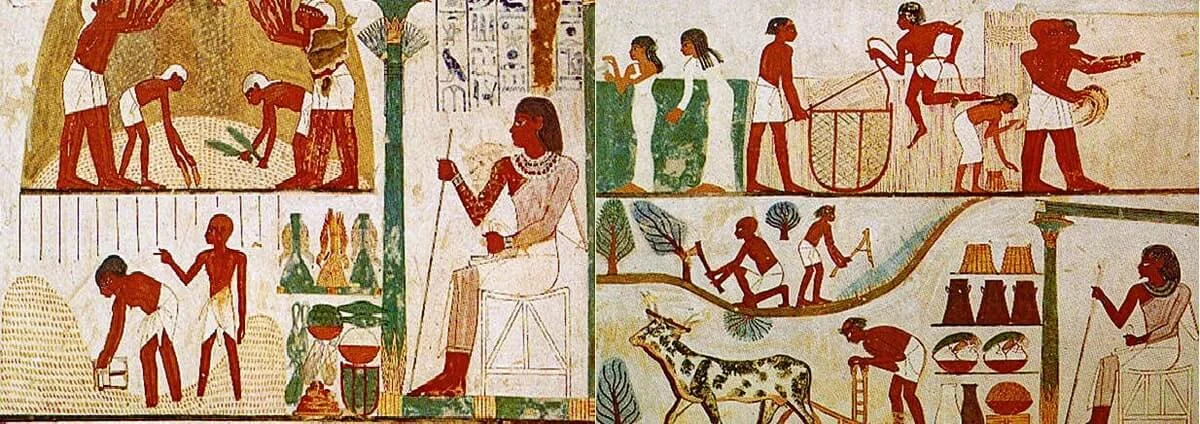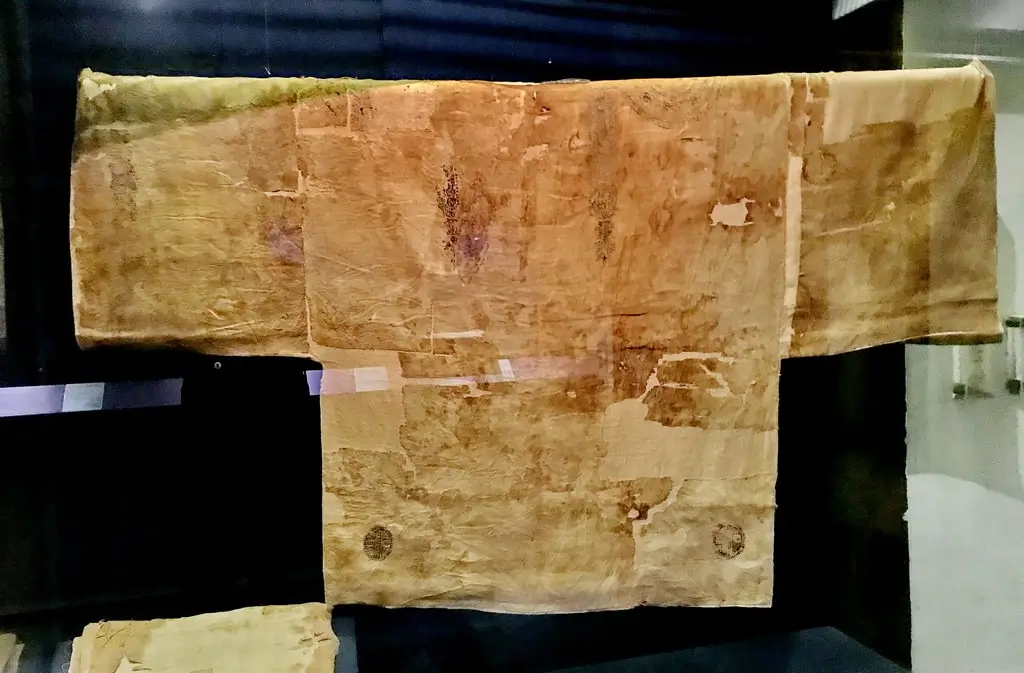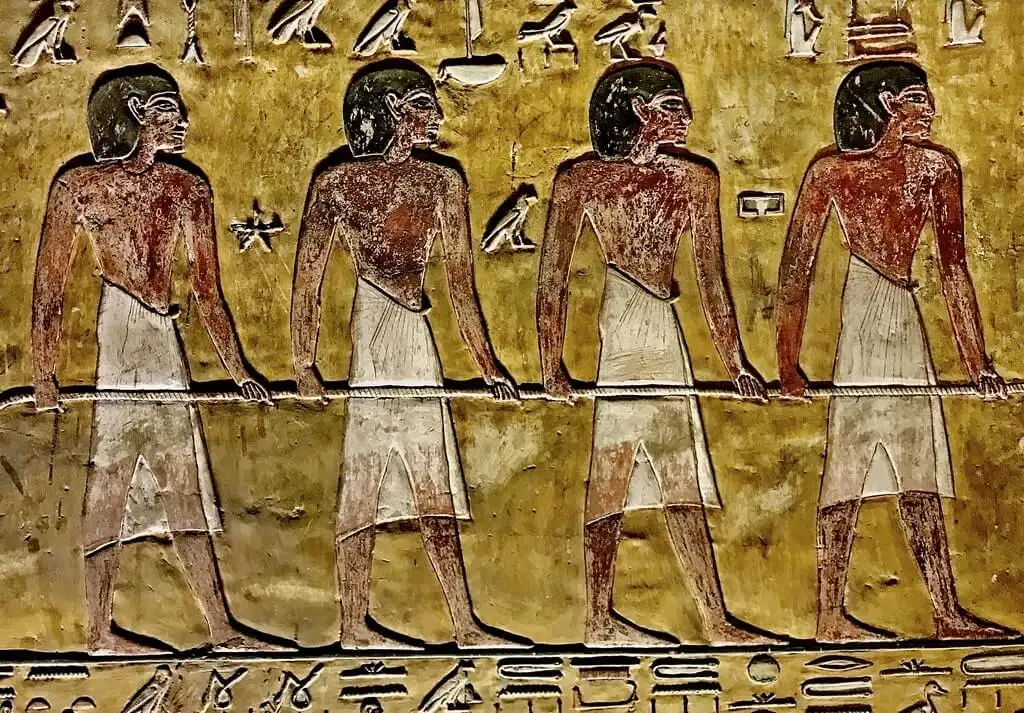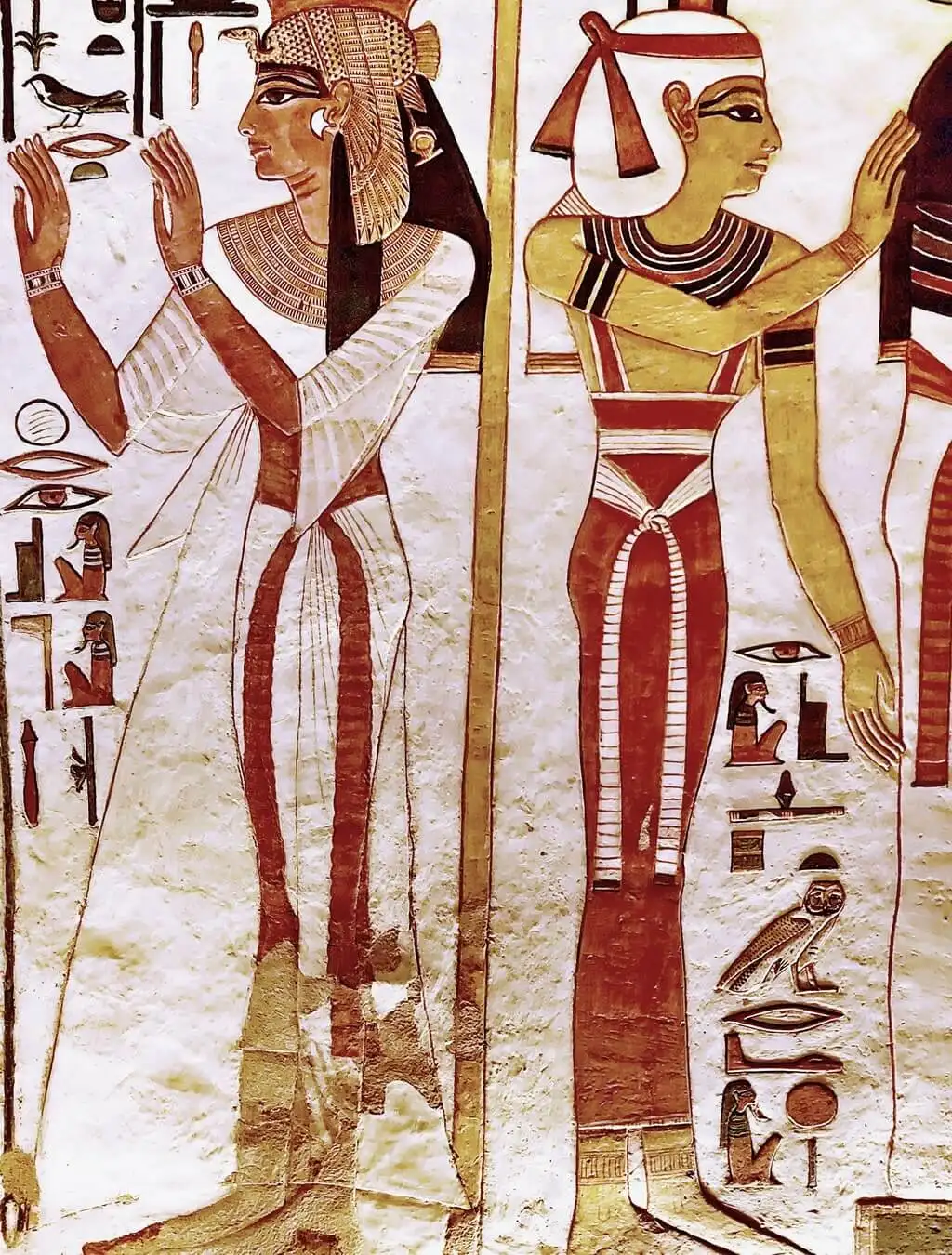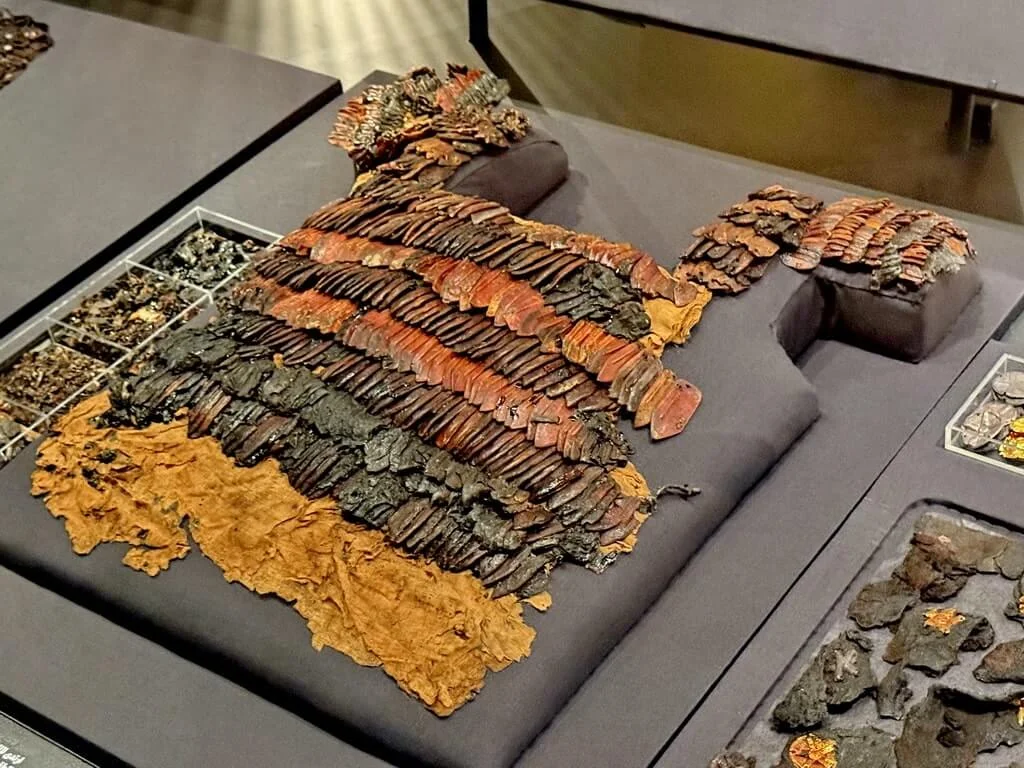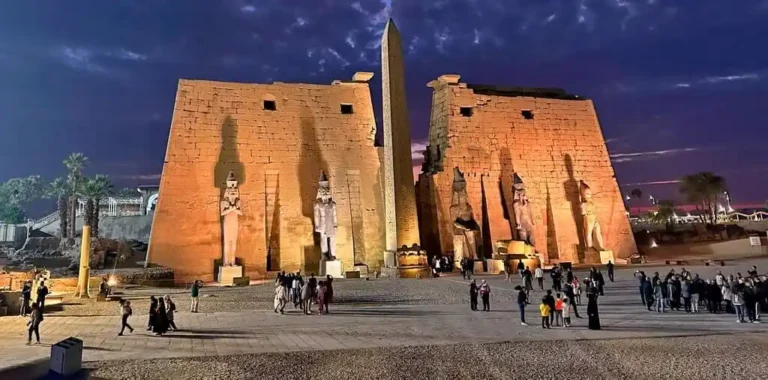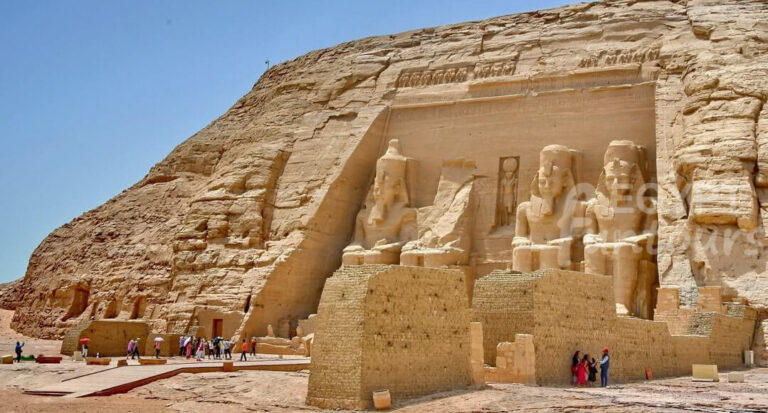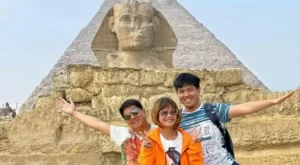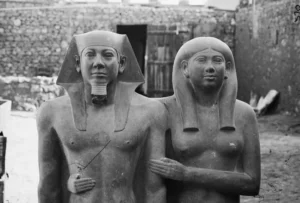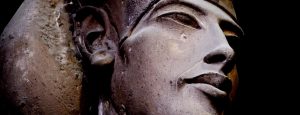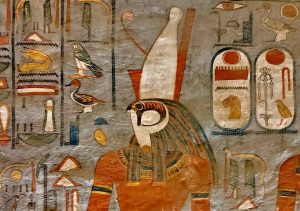More Than Clothing: Adornment, Beauty, and Fashion
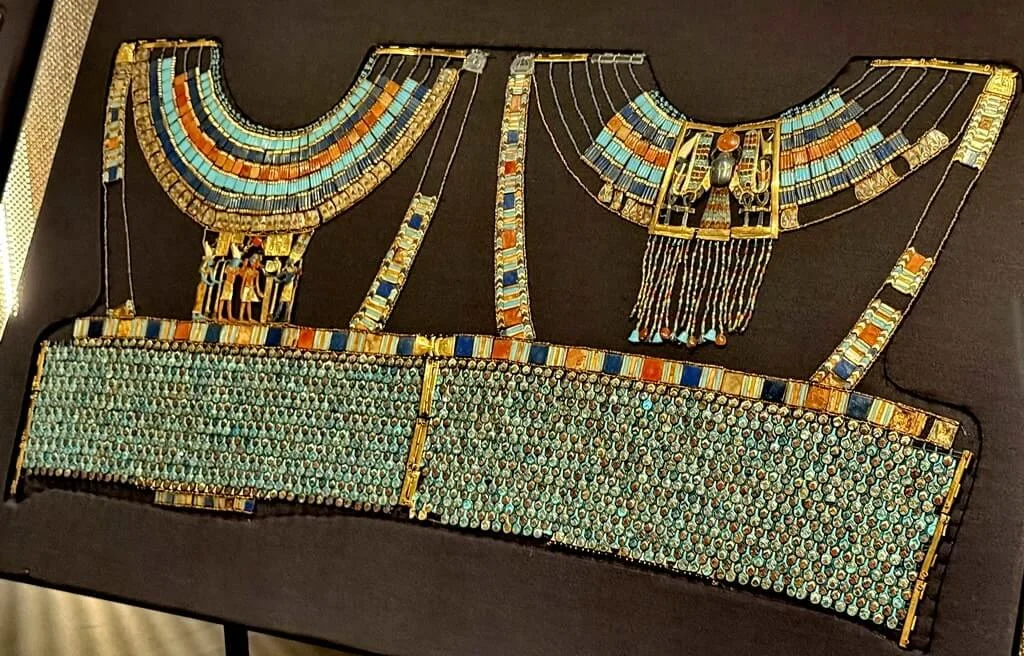
To the ancient Egyptians, the garments were just the canvas. They expressed their true status, beauty, and identity through what they wore with their clothes: wigs, jewelry, and cosmetics.
Crowning Glory: Wigs and Headdresses
While art shows Egyptians with lush, full heads of hair, this was often an illusion. The elite, frequently shaved their heads.
Why Wigs? This practice had two purposes:
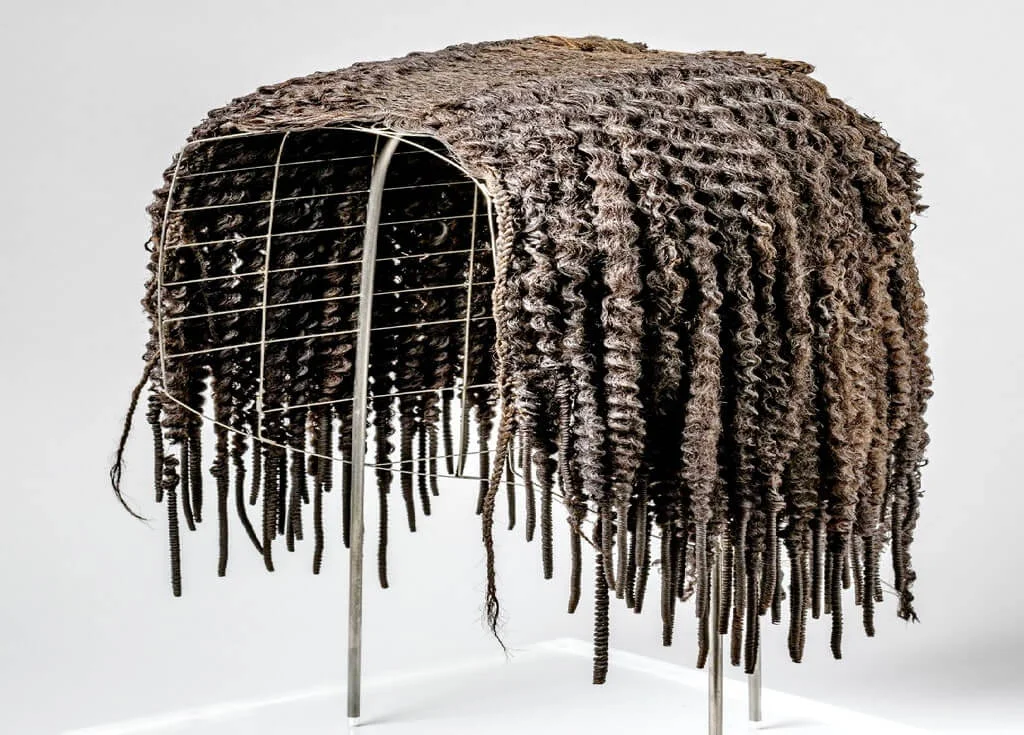
- Hygiene: A shaved head helped them stay clean and prevented infestations of lice, a common problem in the hot climate.
- Fashion: Wigs were an essential fashion accessory. A person could own several different styles for different occasions.
Materials & Styles: Egyptians made the finest wigs from thick, black human hair, often blending it with plant fibers or wool. They set the wigs with beeswax and scented oils. Styles evolved dramatically:
- Old Kingdom: Simple, short, bob-like cuts.
- New Kingdom: Long, elaborate, voluminous wigs with intricate braids, curls, and tassels, which all genders wore.
Royal Headdresses: The pharaoh wore specific headdresses as symbols of power:
- Nemes: The most famous, a striped blue-and-gold cloth headdress (which we see on Tutankhamun’s burial mask) that covered the whole head and tied at the back.
- Uraeus: The rearing cobra symbol, which they attached to headdresses and crowns, represented divine authority and protection.
The Glint of Gold: Ancient Egyptian Jewelry

All classes wore jewelry, from simple amulets for a farmer to massive, complex pieces for the pharaoh. Its purpose was threefold: to display wealth, to enhance beauty, and—most importantly—to provide apotropaic (magical) protection.
Key Pieces:
- Usekh Collar: The iconic, broad collar, which they made from multiple rows of beads, gold, and faience. All of the elite wore it, often with a counterweight in the back.
- Pectorals: Large, amulet-like pendants that hung on the chest, often depicting gods or symbols like the scarab beetle.
- Amulets: Everyone wore these small charms, as they believed the charms offered specific protections. Key symbols included the Ankh (life), the Scarab (rebirth), and the Eye of Horus (protection and healing).
Materials: The Egyptians were master jewelers.
- Gold: They prized gold for its yellow sheen (like the sun) and its incorruptibility (symbolizing eternity).
- Semi-Precious Stones: They highly valued lapis lazuli (deep blue), carnelian (red), and turquoise for their symbolic colors.
- Faience: A unique Egyptian invention, faience was a quartz-based, non-clay ceramic. They could glaze it in vibrant blues and greens, making “jewelry for the masses” and for burial goods.
The Eyes Have It: Cosmetics
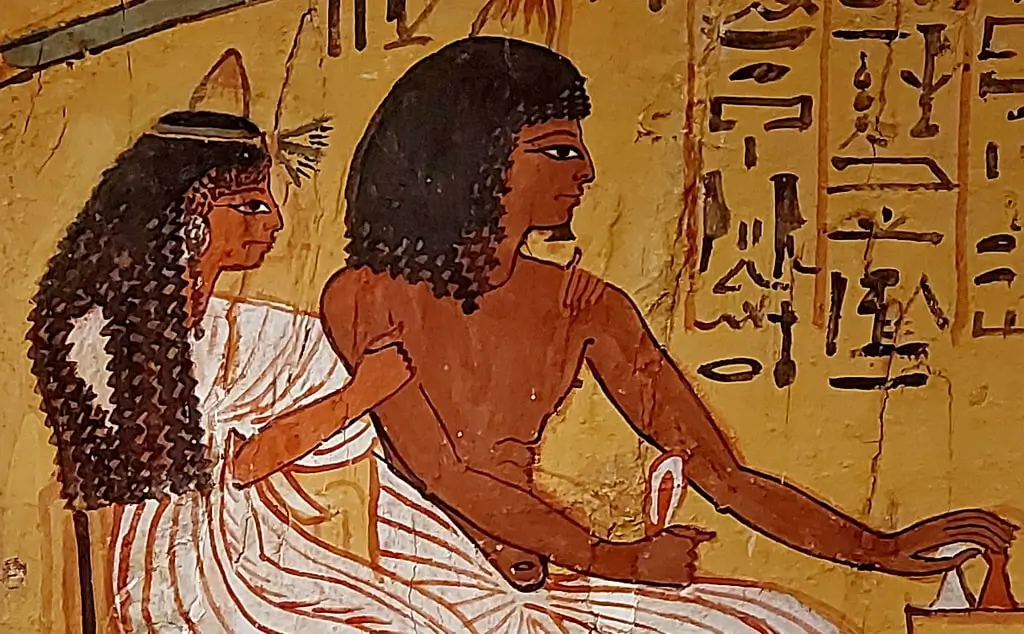
The most defining feature of the ancient Egyptian look is the dramatic eye makeup, which all genders wore.
Kohl: They made this black eye-liner from powdered galena (a dark grey lead ore). It had a dual purpose:
- Beauty: It defined the eye and made the whites appear brighter.
- Practicality: It acted as the world’s first “sunglasses,” as the dark pigment helped reduce the harsh glare of the Egyptian sun and repelled flies.
Eyeshadow: Green (which they made from powdered malachite) was popular in the Old Kingdom, and they also used blue (from lapis lazuli).
Perfumes & Ointments: Egyptians loved fragrance. At banquets, hosts often gave noble guests a perfume cone—a cone of scented fat or wax—to place on their wigs. As the evening progressed, the cone would melt, releasing its fragrance and covering the wig and shoulders in a perfumed oil.
Footwear (and Lack Thereof)
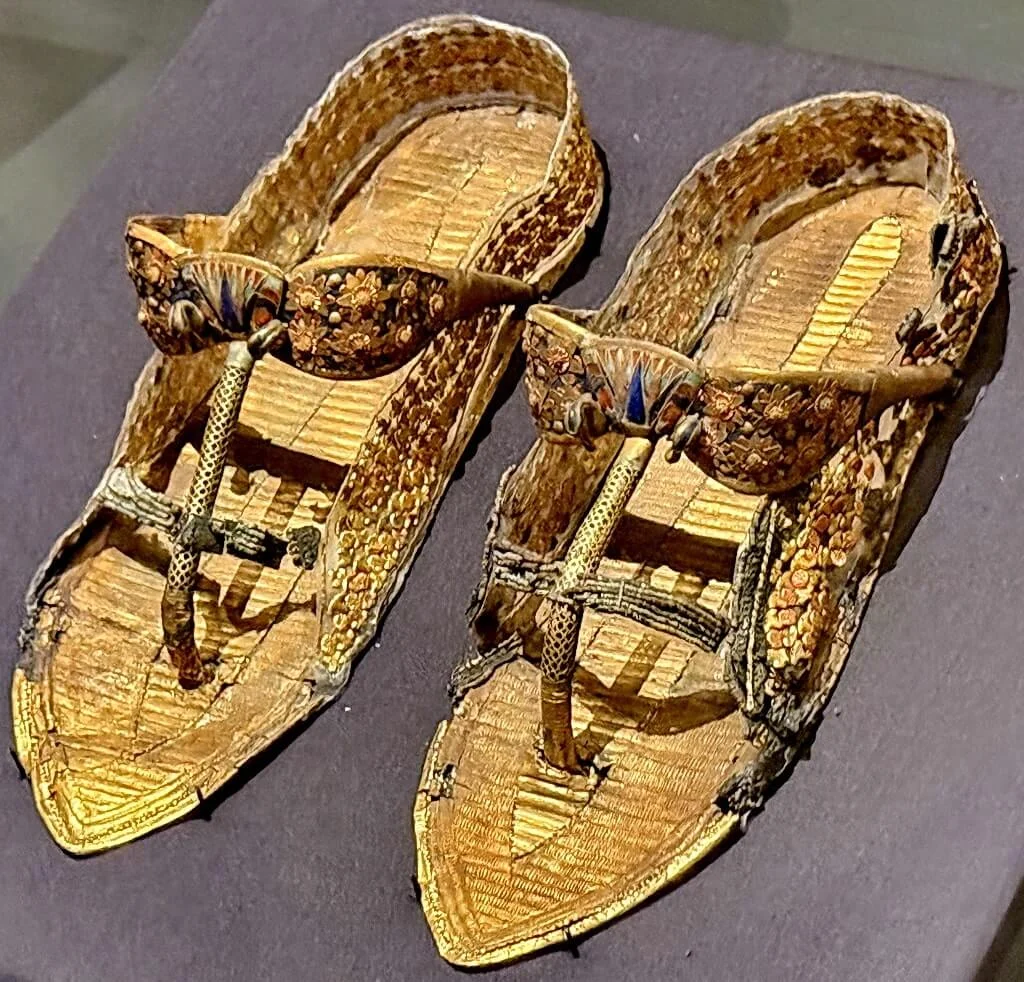
The vast majority of ancient Egyptians, including the pharaoh when indoors, spent their lives barefoot. The clean, cool floors of homes and temples made footwear unnecessary.
When they required shoes, simple sandals were the only option.
- Materials: For commoners, they wove sandals from papyrus or reeds.
- Status Symbol: For the elite, they made them from fine leather. They buried King Tutankhamun with several pairs, including some they had decorated elaborately with gold.
Dressing for Status: Clothing Across Social Classes
In the rigid hierarchy of ancient Egypt, clothing was an immediate and powerful visual communicator of one’s place in society. While the basic garments (kilt, sheath dress) were similar across classes, the differences in quality, material, and adornment were vast.
The Commoner: Farmers, Laborers, and Servants
For the vast majority of the population—the farmers, builders, and servants—clothing was purely functional, simple, and sparse.
- Men: Laborers often worked wearing only a simple loincloth made of linen or, in some cases, leather. For slightly more coverage, a short, coarse linen schenti (kilt) was common.
- Women: Working women wore a simple, durable kalasiris (sheath dress) made of coarser linen, designed to allow for a full range of movement.
- Children: It was common for children of all classes, but especially the people with low income, to go completely naked until puberty, around the age of 10 or 12.
The linen used by this class was the roughest, thickest, and often left in its natural, unbleached beige color.
The Elite: Nobles and Scribes

This is where “fashion” truly began. For the wealthy elite, such as nobles, high-ranking officials, and scribes, clothing was a symbol of their wealth and their detachment from manual labor.
- The Key Difference: Quality. The elite wore clothing made from the finest, softest, “royal linen.” This fabric was incredibly white and so thin it was often translucent.
- Elaboration: Their garments featured complex and meticulous pleating, which required significant time and skill to create and maintain.
- Layering: In the New Kingdom, the elite showcased their wealth by wearing multiple layers—a simple kilt under a long, pleated, transparent robe, paired with an elaborate shawl.
- Adornment: Their look was completed with heavy usekh collars, expensive jewelry, and finely crafted wigs, none of which could be worn while performing physical work.
The Divine and Powerful: Pharaohs and Priests
At the very top of the pyramid, clothing was less about fashion and more about sacred and royal duty.
Priests: Priests were bound by strict rules of purity. They wore only pure white linen garments, as wool and other materials were forbidden. The Sem-priest, a specific type of funerary priest, was identifiable by the leopard skin he wore over his white linen kilt, symbolizing power over chaos.
Pharaohs: The pharaoh wore all the finery of the elite—the finest pleated linen, the most intricate jewelry—but also possessed a unique wardrobe of royal regalia. These were items only he (or she) could wear:
- Royal Kilts: Specific kilts, like the pleated shendyt kilt, were reserved for the king.
- Ceremonial Headdresses: The Nemes, the various crowns (Red Crown of Lower Egypt, White Crown of Upper Egypt), and the Blue Crown (Khepresh) were exclusive symbols of kingship.
- The Bull’s Tail: For much of Egyptian history, the pharaoh wore a bull’s tail attached to the back of his kilt, a symbol of his power and virility.

